
In today’s information-driven world, data seem to be extremely valuable and can be commoditised in a similar way to gold, hence the expression – “data is the new gold”.
But is it? In this article I will cover 3, in my opinion, determining factors, which can turn your data into gold or a liability. In the appendix, you will find a list of activities in a sequence of execution for best results.
Without further ado, let’s dive into why data is considered so critical to prosperity and survival of a modern organisation and how its mismanagement may lead to data being a hefty liability.
Data can be traced back many centuries. In this article my focus will be on data utilised by businesses and organisations as we know them today from 1st Industrial Revolution.
The 1st Industrial Revolution saw transition from crafting to utilisation of machines. Data was used to measure organisational performance and drive internal improvements. These efforts turned manufacturing into mass production and line manufacturing with further operational optimisation – the 2nd Industrial Revolution, as we know it.
It didn’t take long for automation to spread. The 3rd Industrial Revolution increased accessibility and availability of relevant data supported by technology advancements (e.g. the internet, etc.). This allowed organisations to turn their eyes outward and benchmark their performance against competition. Companies began driving improvements necessary not only to improve internal processes but more importantly to retain a desirable market position.
The apogee of data appreciation came with the 4th Industrial Revolution and Internet of Things (IOT). This is when data has been commercialised and monetised bringing owners incredible wealth, which continues today. Majority of winners year on year in this area are hi-tech companies (1).
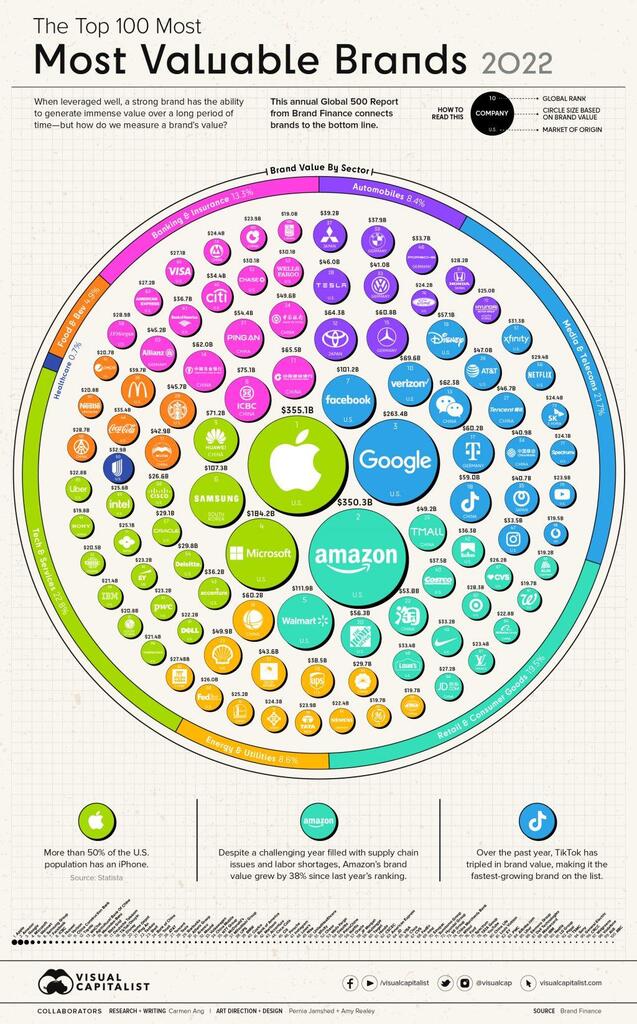
Value of these brands is scored based on:
The financial results are then combined with quantitative survey data, sourced from over 170,000 global consumers. The end result is a holistic look at a company’s brand equity, reputation, and ability to generate value.
This I’m sure doesn’t come as a surprise. But what makes the top brands so successful in their exponential growth?
Is it an accurate decision-making, fast innovation cycle, effective R&D, quality of product/service adapted to changed customers behaviours or market trends?
Data-centric by Wikipedia is an approach that merges innovative hardware and software to treat data, not applications, as the permanent source of value. It aims to extract as much value as possible from existing and new data sources.
As already mentioned, from the one side – knowledge obtained from data helps improve products, services, and business performance. From the other – your organisation, business model dependent, can capitalise on data needs and relevant customer engagement models as shown below (2).
I frankly don’t know the answer to this question. It may well be a combination of the above. What I do know however is that all of these companies share one trait – their data centric approach.
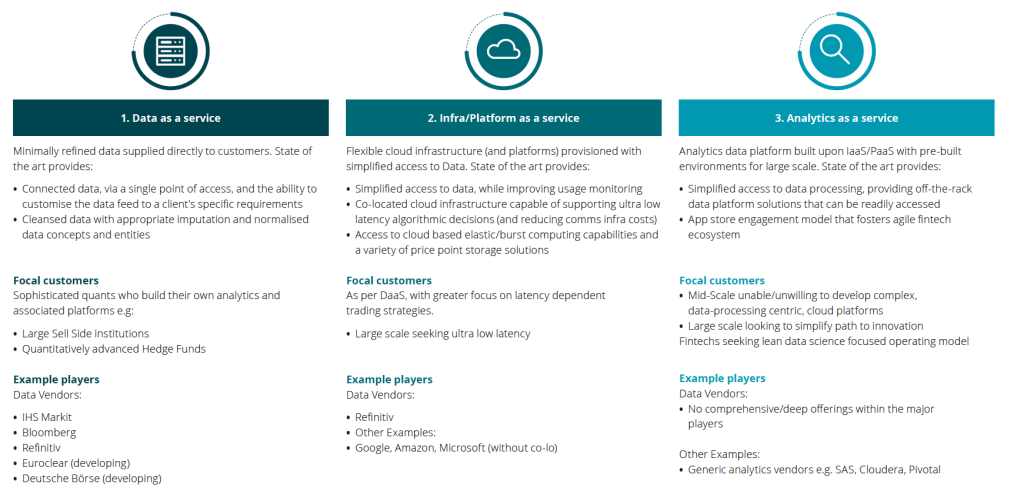
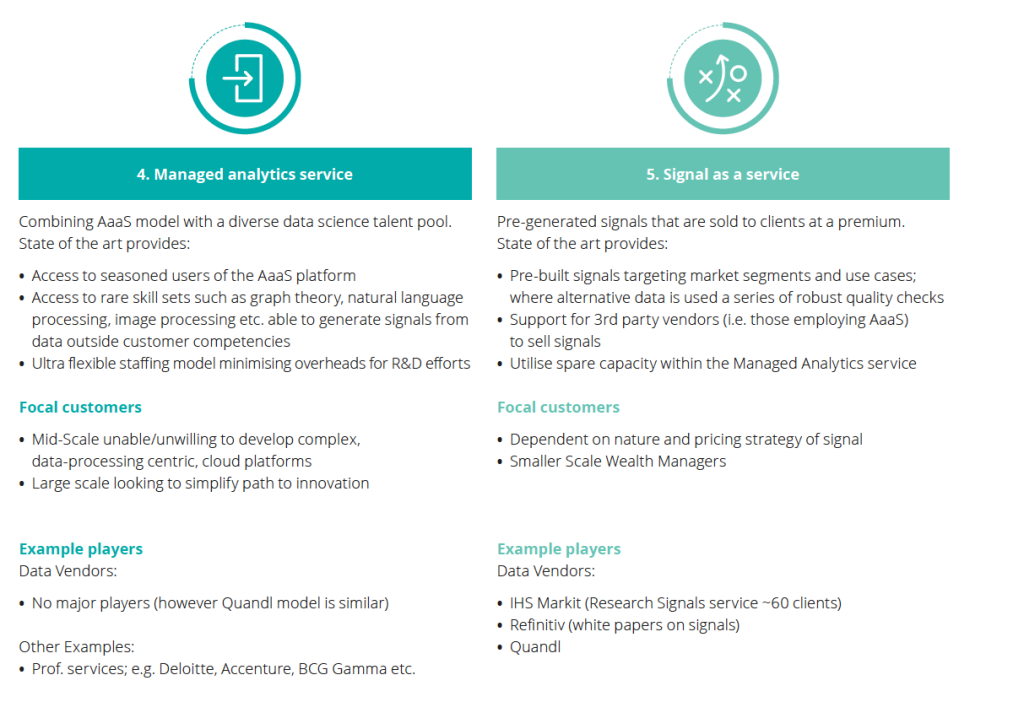
It all sounds relatively easy, yet many businesses fail their quest. Why?
Based on my experience, I consider these 3 determining factors as critical to make it or break it.
For data strategy to be successful, it must address key organisational goals and be aligned with business strategy (3). Your executive support and focus on end goals, overlooking and driving execution is essential. Otherwise, you risk slow progress as a result of:
What if your funds were limited? How to select the right data and assess its value?
One of my favourite tools, for ease of application, is a framework proposed by Nagle, T. (2016). It’s an intuitive tool, which populated by your cross-functional team will provide solid insights into key business data.
Its simplicity and accuracy may surprise you, however as always the devil’s in the detail. The critical success factor to get accurate inputs, is an appointment cross-functional team. This means not only your IT talent or consultants, but more importantly your business subject matter experts who know what make your business tick.
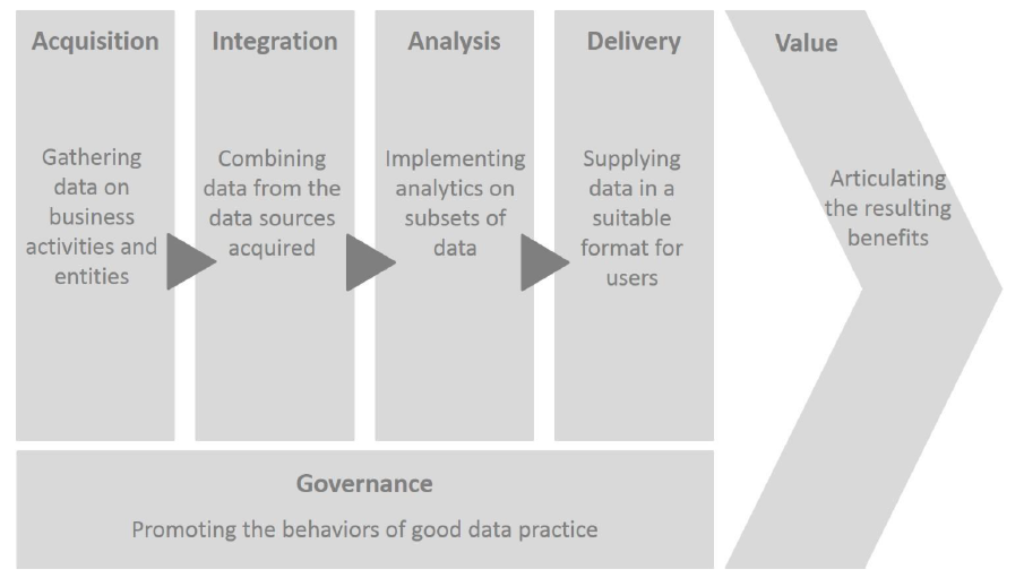
Having limited resources, your focus should be on acquiring business-critical data of the highest benefit to the organisation. This, combined with clarity on data maturity (see below) will indicate estimated investment.
To assess Data Maturity to determine existing versus required business capabilities use IBM or other available models (4).
I have included this model for your convenience, which doesn’t mean that the model is exclusive. You may want to add other leading factors of importance such as: data quality, digital skills, executive support, data security, etc. The more factors you add the more comprehensive picture on the level of investment and effort required to implement your data initiative(s).
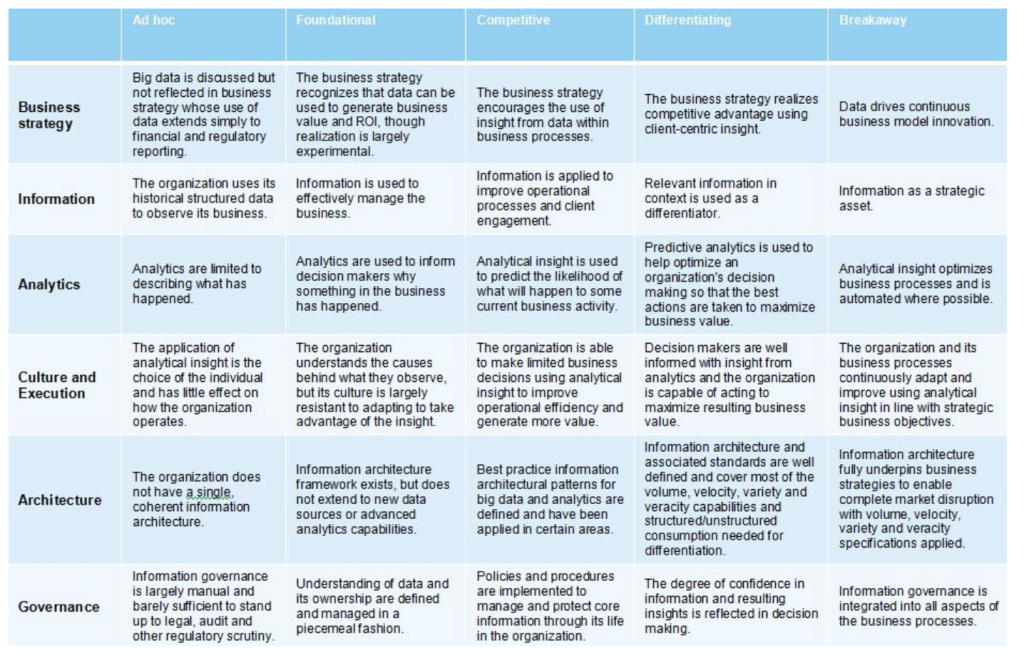
Also, if your business is under funds constraints, there are prioritising mechanisms frequently used by businesses in times of financial hardship (5) e.g. prioritisation matrix or other techniques.
As you see, from the above it’s not the limited or unlimited funds that make it or break it, but the executive support that is critical.
Having data value and data maturity mapped, transfer identified implementation steps to a roadmap to keep an eye on the journey your business makes.
This is not an easy task as the target is moving. What does this mean?
In 2020 1000% more data has been reported and recorded than in 2013 (44 zettabytes vs. 4.4 zettabytes of data). To put this into a meaningful perspective – in 2020 we had 40 times more data than stars in the observable universe (6).
Whilst concepts and laws may evolve as we enter quantum computing, the trend of exponential growth of data is here to stay:
The list of challenges is much longer. The importance of which and how much data is collected as well as how it is collected and how it’s going to be used is crucial, as will drive associated costs and challenges of (7):
How to prevent these from happening and your data turning into a liability?
Firstly – select an appropriate technology and software.
If you don’t have an allocated internal team, there are many online sources or 3 rd party experts to assist with identification, selection, and implementation of an appropriate and relevant technology(ies) and data architecture system(s) to suit the unique needs of your business. As this subject is well covered in reputable online sources, I won’t dwell here on this subject.
One piece of advice from my past/practical experience – whilst implementing systems for the needs your business has today, consider future requirements such as scalability as your business grows. This will allow a bitter surprise of cost and liabilities linked with system replacement or upgrade(s).
Data Governance, the one to rule them all. What is it?
As per the Data Management Body of Knowledge, it is the exercise of authority and control (planning, monitoring and enforcement) over the management of data assets in order to realise benefits of its value (8).
All organisations make decisions about data, however those with established governance make them with greater intentionality, capitalising on greater value from their data assets.
Imagine data governance as a foundation of your operating model influencing: data consistency, data quality, its accuracy, security and safety in order to increase innovation, improve business performance and maximise profits (see infographics below).
In one word the expectation is that data governance with its elements is an enabler to turn your data into gold.
Data Governance is not always appreciated by organisations, yet plays critical role in setting your business for a success.
When updating governance, businesses frequently appoint graduates or rather junior function, as this is not seen to be a critical success factor. Knowing what you know, consider risks and cost of this decision.
Also, not to miss opportunities keep an eye on uprising trends, such as blockchain as a platform for data governance (9).
Many people link blockchain with cryptocurrency and finance … and they are right. However evolution and characteristics of this technology allow applying it as an agile data governance platform to solve wide swath of governance issues, thanks to:
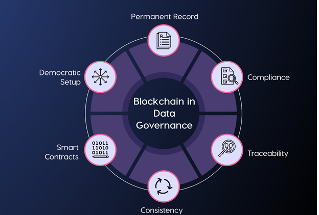
Blockchain practices are aimed to improve the fundamental challenges of the current data governance, with many organizations already switching to blockchains to store and manage their data (10) enabled by e.g. Amazon AWS (11), Google Cloud (12) or Microsoft Azure (13).
Having the best technology doesn’t automatically translate to high quality of the harnessed data.
Research indicates that data quality problems can stem from lack of organisational commitment, leadership, governance or data management from data entry, processing, system design, etc. (8)
There is the saying “garbage in means garbage out” – in other words poor-quality inputs will produce faulty, misleading and potentially harmful to the decision-making output. There is the saying GIGO meaning garbage in garbage out – in other words, poor-quality inputs will produce faulty, misleading and potentially harmful to the decision-making output.
If quality of your data is of concern and you wish to perform Data Quality Assessment, DAMA provides an incredibly helpful framework. Below is data quality network reflecting data dimensions and concepts (arrows reflect an overlap between concepts) to give you an appreciation of its complexity.
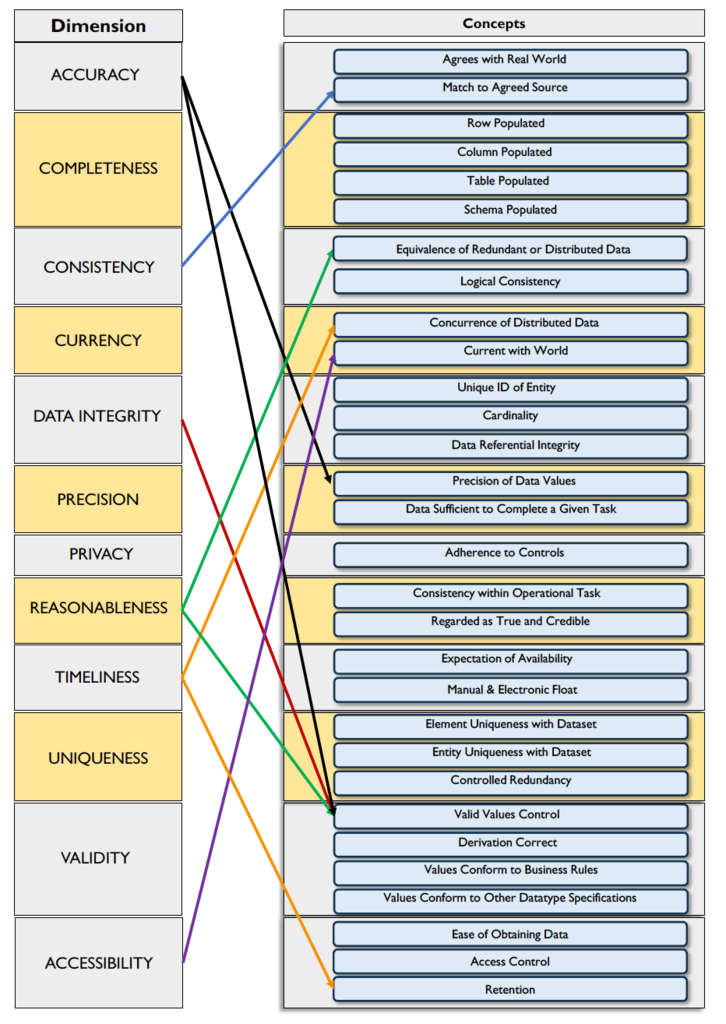
Not only DAMA but also ISO 8000 (International Standard for Data Quality) provides guidance on what is / is not quality data, with a computer program that can verify if and which standards and requirements have been followed.
Whilst many sources and consultancies focus on technology and governance, what you are unlikely to hear is the importance of data centric culture and data literate team.
Your business might have just invested in the most amazing technology and system, however until your wider team, not just data scientists, is data literate and empowered to read, interpret and communicate data in context, you are unlikely to realise the expected benefits.
Why? Because your team won’t be able to feed the system with data and operate it for the desired results
Establish data literacy level required to operate the system, identify data talent, create data literacy program to train team members and where internal training is not sufficient recruit required talent, e.g. data analyst, scientist, etc.
What does data culture have to do with this?
Data leveraged by your teams through their behaviours will lead to improved business performance. (14) You surely want your team to be diligent, accelerate application of analytics and steer your company away from risky outcomes?
If your organisation is not there yet, you can you instil data centric culture by:
As you see, the right data centric culture has dual function – guarding your business against risks and allowing opportunities, which might have been missed otherwise.
Such opportunities in a form of evolving practices have been captured in the model below (15), which is evolutionary in nature as more advanced practices have been built on their predecessors.
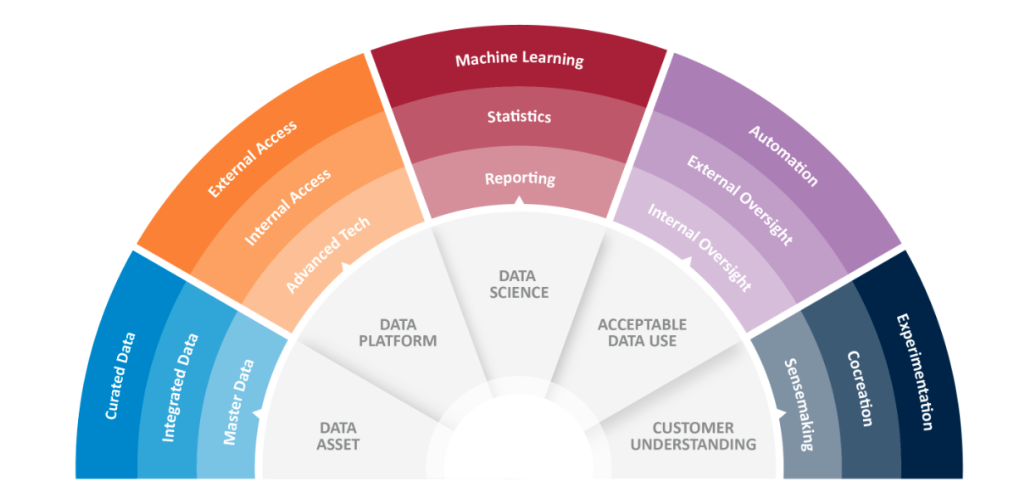
I hope you found the pointers above useful to depict mechanisms and practices relevant to your business which will help turning your data into assets in a sustainable way.
In this paper I outlined the importance of 3 interlinked factors
Number 1 – no program or initiative will succeed without a proactive executive support – your active presence, drive and overseeing execution of data initiatives.
Number 2 – a success won’t be possible if data is not seen as an asset by you and your team with appropriate technology and defined data governance to enable turning your data into gold.
Number 3 – your people empowered by data-centric culture, relevant data literacy and ownership to as the right questions and challenge status quo are at the core of the success.
In summary – data is the new gold but only if you know how to harness its power.
If your business is a start-up, with blank canvas and you wonder where to start, I recommend steps outlined below in this exact order of execution to avoid duplication of effort and cost escalation:
Copyright© 2020-2024 Simplarity Limited